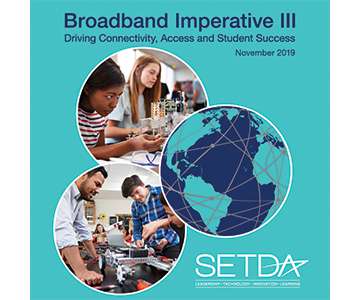5 priorities for broadband access
eSchool News
FEBRUARY 5, 2020
Equitable, reliable, and robust broadband access both on and off campus is essential to support digital learning and prepare K-12 students for life and work. The declaration is a cornerstone of Broadband Imperative III: Driving Connectivity, Access and Student Success , a new report from SETDA.




























Let's personalize your content